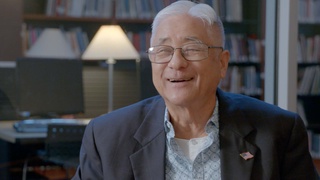Interviews
Going to America after completing a three-year contract twice (Japanese)
(Japanese) There’s an organization called Japan Chefs Association, and I became a member of Sanchoukai’s association. There I went through a series of training, so to speak, or they sent me to different places – “today you go there, that place needs more people.” It was like an employment agency, and I worked at different kinds of places. I worked in Tokyo, too. I also worked outside of the prefecture. While I was working like that, one day, they asked me, “Hey Toyoshima. There’s this job in America. Would you be interested?”
Before that, it seemed that our seniors had already come here since around 1968, and it was in 1973 when they were looking for the third replacement - I was 25 at the time - they asked me if I’d be interested to go to Los Angeles, and I said yes. I was going to work for two years at first and then it turned out to be three years – I was expecting some hardship, but it was very, uh, it’s probably because I’d worked around the city, my impression of Los Angeles was that it looked like an old town, and there were few sushi restaurants at the time, and I worked at a place called Tokyo Kaikan for three years.
I finished the three years of my contract. Now I had to go back. So I did. It didn’t take a year to get another offer from the office. They asked me if I could give an “encore.” They told me that it had to be me, so I signed a contract with the same Tokyo Kaikan and came here to work for another three years.
So back in the days, it was like how baseball players today get their offers, you know, looking back on it now, I’m reminded of the fact that we came here because we were offered a contract, too.
Date: April 16, 2016
Location: California, US
Interviewer: Mistue Watanabe
Contributed by: Watase Media Arts Center, Japanese American National Museum







